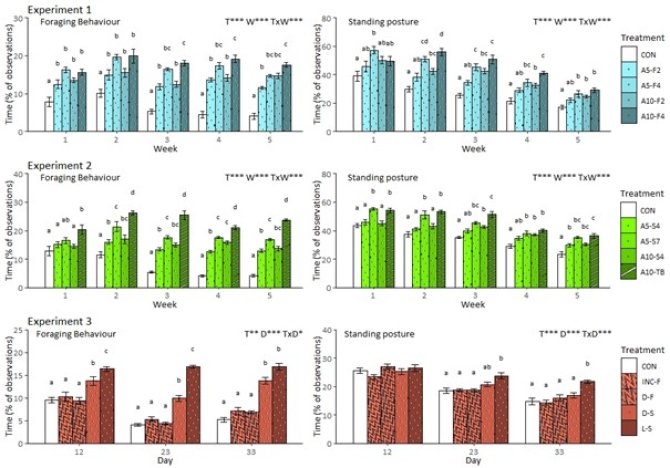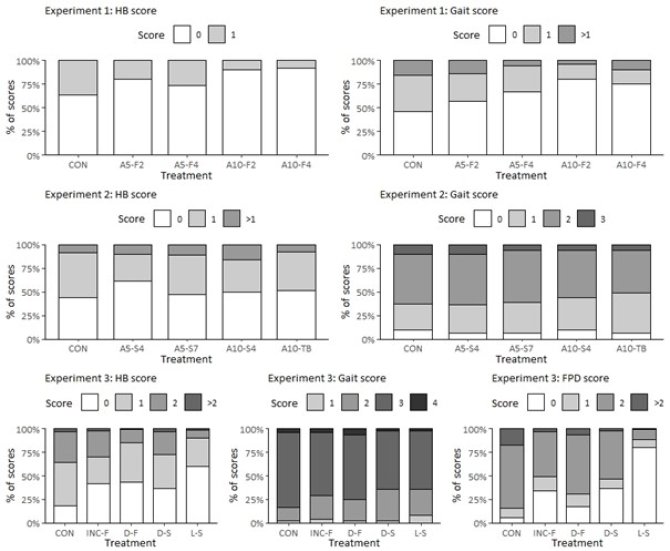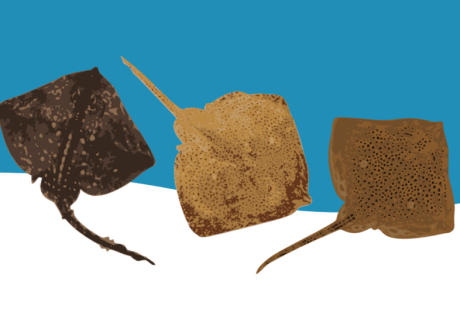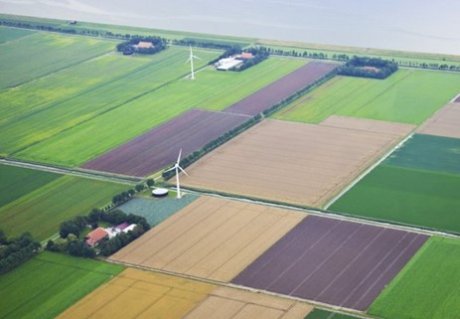
How black soldier fly larvae (Hermetia illucens) benefit broiler welfare
WIAS Magazine - Fall edition 2022
Research Highlight
Broilers generally have a high growth rate and are housed in barren environments at high stocking densities. These conditions impair their ability to perform highly motivated natural behaviours such as foraging, and as a result broilers spend up to 80% of their time sitting without performing any active behaviours (1). Inactivity hinders leg bone development, which can result in leg health problems such as lameness, and long-term contact with wet and ammonia-rich litter can cause contact dermatitis on the feet (foot pad dermatitis, FPD) and hocks (hock burn, HB) of broilers (2). Both impaired behaviour and increased leg health problems can negatively influence the affective (i.e., emotional) state of broilers and diminish their overall welfare (3). Black soldier fly larvae (Hermetia illucens, BSFL) could potentially be used as edible environmental enrichment that benefits broiler welfare. First, whole (live or dried) larvae are expected to be highly attractive to broilers due to their high fat and protein content and, in case of live larvae, motility (4,5). As a result, providing these larvae to broilers could stimulate foraging behaviour, increase broiler activity, and possibly improve broiler leg health and affective states. Secondly, BSFL contain compounds that may benefit broiler immunology and thus broiler health (e.g., chitin and lauric acid, reviewed by (6)). To determine if and how BSFL benefit broiler welfare we studied the effects of BSFL provisioning on broiler behaviour, leg health, and affective state.
In the first experiment (7), the effect of different amounts of live BSFL scattered through the pen at different daily frequencies was determined. Control (CON) broilers did not receive any BSFL. In the BSFL treatments broilers received either 5% or 10% of the estimated daily dietary dry matter (DDDM) intake as live BSFL (hereafter referred to as A5 and A10, respectively), scattered through the pen either two or four times a day (F2 and F4, respectively), resulting in treatments A5-F2, A5-F4, A10-F2, and A10-F4 (stocking density up to 4.5 broilers/m2). Weekly behavioural observations indicated that all BSFL treatments stimulated foraging behaviour throughout the rearing period compared to controls, with the highest levels occurring in the F4 treatments (Figure 1). All treatments except the A5-F2 treatment increased the time broilers spent standing (Figure 1). Considering leg health, at the end of the rearing period the severity of HB was lower in A10-F2 and A10-F4 broilers than in controls, and the severity of lameness (indicated by gait score) was lower in A5-F4, A10-F2, and A10-F4 broilers than in controls (Figure 2). From these results, we concluded that live BSFL provisioning could be beneficial for broiler welfare, especially when provided at higher daily provisioning frequencies.

Figure 1. Home-pen foraging behaviour and standing posture (% of observations) of broilers receiving no larvae (CON), or larvae provided in different forms and using different provisioning methods (abbreviations explained in the main text). Different bar patterns indicate different provisioning methods as follows: scattered through the pen multiple times a day (circles), provided in transparent tubes (stripes), and provided in the feeder (waves). Data presented as means ± SEM. Effects of Treatment (T), Week (W) or Day (D), and their interaction (TxW or TxD) are indicated as ns (not significant), * (p < 0.05), ** (p < 0.01) or *** (p < 0.001). Different letters within one week or day indicate significant (p < 0.05, Tukey’s HSD correction) differences between treatments.
Based on the discovery that higher provisioning frequencies (which increase the time broilers can interact with larvae) provided more welfare benefits, the second experiment (8) was aimed at determining the effect of prolonged access to live BSFL on the welfare of broilers kept at near-commercial densities (up to 11 broilers/m2). Besides CON broilers, the two most effective strategies from experiment one (i.e., 5 and 10% of the DDDM replaced with live BSFL that were scattered through the pen four times a day, A5-S4 and A10-S4, respectively) were included, as well as two treatments where either 5% of the DDDM was replaced with live BSFL that were scattered through the pen seven times a day (A5-S7), or where 10% of the DDDM was replaced with live BSFL provided in transparent tubes on the floor that needed to be manipulated by the broilers to get the larvae out (A10-TB). Again, all BSFL treatments increased the time spent foraging compared to controls (Figure 1), where providing larvae in tubes was especially effective in stimulating foraging behaviour. The two new strategies (A5-S7 and A10-TB) were the only strategies that increased the time spent in standing posture throughout the whole rearing period, and only these strategies reduced the time broilers spent in tonic immobility compared to controls (Table 1), indicating that these broilers were less fearful (9). Leg health parameters were not influenced by BSFL provisioning in this study (Figure 2).

Table 1. Tonic immobility (TI) responses of broilers receiving no larvae (CON) or provided with larvae in different amounts (5% or 10% of the total dietary DM replaced with larvae, A5 and A10 respectively) and provisioning methods (scattered four or seven times a day, S4 and S7 respectively, or in tubes, called TB). Broilers that were not induced in tonic immobility after three attempts were excluded from the analysis. Data are presented as means. Different letters indicate significant (p<0.05, Tukey’s HSD correction) differences between treatments. *p <0.05
Finally, in experiment three (10) the effects of different BSFL forms and provisioning methods on broiler welfare were determined. CON broilers did not receive any BSFL, and in the BSFL treatments 8% of the ingredients from the CON pellets was replaced by BSFL on a DDDM basis as follows: BSFL meal and oil incorporated in the pellets and thus provided in the feeder (INC-F), dried whole BSFL provided in the feeder (D-F), dried whole BSFL scattered through the pen (D-S), or live BSFL scattered through the pen (L-S) (14 broilers/m2). Dried and live larvae were provided in equal portions 4x a day. Foraging behaviour was only increased compared to controls by scattering dried or live BSFL through the pen (Figure 1). Live larvae caused higher levels of foraging behaviour than dried larvae, and only live larvae increased the time broilers spent standing (Figure 1). There was a tendency for treatment to influence lameness, the severity of HB was lower in L-S broilers than in controls, and the severity of FPD was lower in INC-F, D-S, and L-S broilers than in controls (Figure 2).

Figure 2. Percentage of broilers with each hock burn (HB), gait, and foot pad dermatitis (FPD) scores (higher scores equal worse leg health (11)) of broilers receiving no larvae (CON), or larvae provided in different forms and using different provisioning methods (abbreviations explained in the main text).
In conclusion, live BSFL seem the most appropriate BSFL form to improve broiler welfare. Especially provisioning methods that prolong the interaction time with the larvae can greatly stimulate broiler foraging behaviour, increase the time spent in standing posture, improve leg health, and reduce fearfulness. Dried BSFL and BSFL processed into meal and oil can also benefit broiler welfare through their nutritional properties. Different rearing conditions (e.g., pen size, stocking density) can cause different effects on the observed parameters, therefore validation of the observed effects in distinct production systems is key to optimize the use of BSFL provisioning to improve broiler welfare.
References
1. de Jong IC, Gunnink H. Effects of a commercial broiler enrichment programme with or without natural light on behaviour and other welfare indicators. Animal [Internet]. 2018 Jul 16 [cited 2018 Oct 15];13(2):384–91. Available from: https://www.cambridge.org/core/product/identifier/S1751731118001805/type/journal_article
2. Bassler AW, Arnould C, Butterworth A, Colin L, de Jong IC, Ferrante V, et al. Potential risk factors associated with contact dermatitis, lameness, negative emotional state, and fear of humans in broiler chicken flocks. Poult Sci. 2013 Nov 1;92(11):2811–26.
3. Bessei W. Welfare of broilers: A review. Worlds Poult Sci J. 2006 Sep 1;62(3):455–66.
4. Makkar HPS, Tran G, Heuzé V, Ankers P. State-of-the-art on use of insects as animal feed. Anim Feed Sci Technol [Internet]. 2014 Nov 1 [cited 2018 May 7];197:1–33. Available from: https://www.sciencedirect.com/science/article/pii/S0377840114002326?_rdoc=1&_fmt=high&_origin=gateway&_docanchor=&md5=b8429449ccfc9c30159a5f9aeaa92ffb
5. Clara E, Regolin L, Vallortigara G, Rogers LJ. Chicks prefer to peck at insect-like elongated stimuli moving in a direction orthogonal to their longer axis. Anim Cogn [Internet]. 2009 Nov 23 [cited 2019 May 6];12(6):755–65. Available from: http://link.springer.com/10.1007/s10071-009-0235-y
6. Dörper A, Veldkamp T, Dicke M. Use of black soldier fly and house fly in feed to promote sustainable poultry production. J Insects as Food Feed [Internet]. 2020 Nov 16 [cited 2020 Nov 27];7(5):761–80. Available from: https://www.wageningenacademic.com/doi/pdf/10.3920/JIFF2020.0064
7. Ipema AF, Gerrits WJJ, Bokkers EAM, Kemp B, Bolhuis JE. Provisioning of live black soldier fly larvae (Hermetia illucens) benefits broiler activity and leg health in a frequency- and dose-dependent manner. Appl Anim Behav Sci [Internet]. 2020 Jul 15 [cited 2020 Jul 16];105082. Available from: https://linkinghub.elsevier.com/retrieve/pii/S0168159120301702
8. Ipema AF, Bokkers EAM, Gerrits WJJ, Kemp B, Bolhuis JE. Long-term access to live black soldier fly larvae (Hermetia illucens) stimulates activity and reduces fearfulness of broilers, without affecting health. Sci Rep [Internet]. 2020;10(1):17428. Available from: https://doi.org/10.1038/s41598-020-74514-x
9. Forkman B, Boissy A, Meunier-Salaün M-C, Canali E, Jones RB. A critical review of fear tests used on cattle, pigs, sheep, poultry and horses. Physiol Behav [Internet]. 2007 Oct 22 [cited 2016 Feb 12];92(3):340–74. Available from: https://www.sciencedirect.com/science/article/pii/S0031938407001096
10. Ipema AF, Bokkers EAM, Gerrits WJJ, Kemp B, Elizabeth Bolhuis J. Provision of black soldier fly larvae (Hermetia illucens) in different ways benefits broiler welfare and performance, with largest effects of scattering live larvae. Physiol Behav [Internet]. 2022 Dec 1 [cited 2022 Oct 21];257:113999. Available from: https://linkinghub.elsevier.com/retrieve/pii/S0031938422003043
11. Butterworth A. Welfare Quality Assessment protocol for poultry [Internet]. Welfare Quality Consortium; 2009 [cited 2018 May 28]. 21–59 p. Available from: https://www.researchgate.net/publication/263444443_Welfare_QualityR_Assessment_Protocol_for_Poultry_Broilers_Laying_Hens





